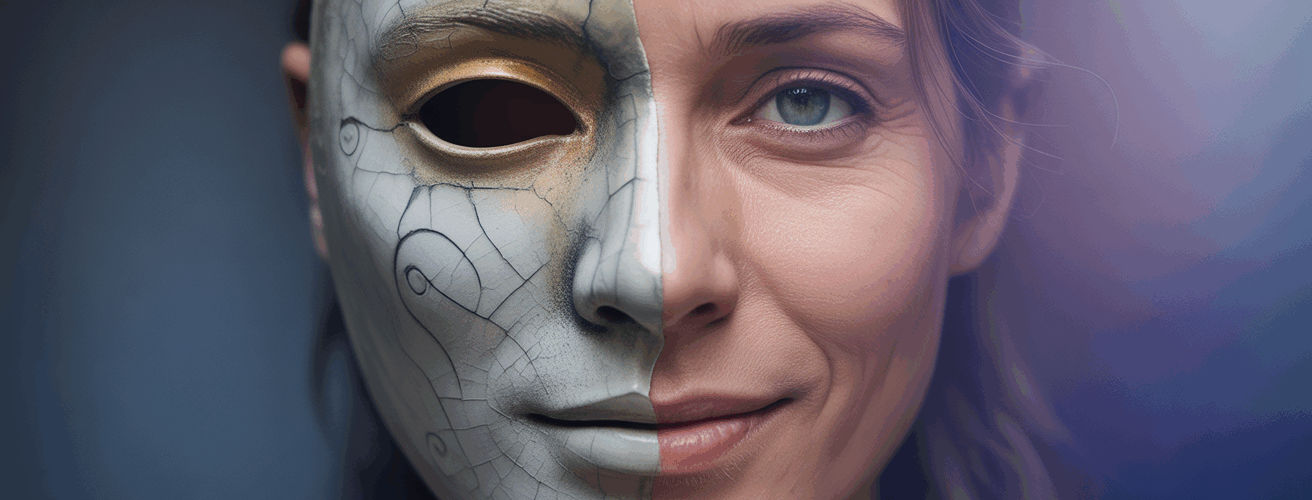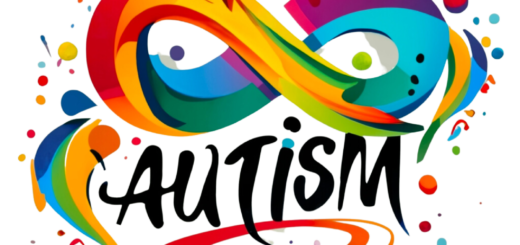The Autism Test: A Deep Dive into Why Adults Are Self-Identifying as Autistic & What It Really Means

Have you ever felt fundamentally “different” from your peers? Do you find yourself exhausted after a simple social gathering? Do small changes to your routine feel like a major disruption? If you’ve typed “autism test” into a search engine, you’re not alone. You’re part of a growing number of adults seeking a coherent explanation for a lifetime of feeling out of place.
The act of self-identifying as autistic is deeply personal. It is a meaningful journey. It is often driven by a quest for self-understanding and a sense of belonging. This isn’t just a modern cultural trend. It is a direct result of historical missteps. Evolving diagnostic criteria and the newfound power of online communities also contribute. This article will provide you with the tools for self-exploration. It will also validate your journey. Additionally, it will explain the science behind this growing phenomenon.
TL;DR: Key Takeaways for Adult Autism Self-Identification
The Lost Generation
Millions of adults, especially women and older individuals, were missed by outdated diagnostic criteria and now seek answers through self-identification.
Validated Screening Tools
AQ, RAADS-R, and CAT-Q are scientifically validated self-assessments that can indicate autistic traits, though they’re not diagnostic tools.
Masking & Camouflaging
Many autistic adults have learned to “mask” their traits, leading to exhaustion, mental health issues, and identity confusion.
Self-ID vs Formal Diagnosis
Both paths are valid. Self-identification offers community and understanding, while formal diagnosis provides access to services and accommodations.
The “Lost Generation”: A History of Missed Diagnoses
For decades, the diagnostic criteria for autism were narrow. They often missed individuals who didn’t fit a specific, and often stereotypical, mold. Many researchers and advocates call this the “lost generation” of autistic adults. These are individuals who were under-identified in their childhood. Historic diagnostic biases related to gender, socioeconomic status, and intelligence contributed to this.
This group disproportionately includes women, older individuals, and people with higher intelligence. They often share similar struggles with employment. Societal stigma and quality of life issues are also common, just like their formally diagnosed counterparts. For these individuals, self-diagnosis isn’t a casual choice. It’s a necessary act of self-advocacy. It is also a way to find a label that finally makes sense of lifelong challenges.
The Unspoken Struggle: What is Masking?
Many autistic adults—particularly those who were under-identified in childhood—have spent their lives “masking” or “camouflaging” their traits to appear neurotypical. This is a learned coping strategy to fit into society and avoid stigma or judgment.
Masking can manifest in various ways. It may involve forcing eye contact and scripting conversations in advance. Additionally, it can include suppressing natural, self-regulating behaviors like “stimming”. This constant performance demands a tremendous amount of physical energy. It also demands mental energy. These demands often lead to severe mental health outcomes. Examples include anxiety, depression, and a devastating loss of one’s sense of self.
The journey toward “unmasking”—the process of shedding these learned behaviors—can be incredibly challenging. It can lead to profound questions about one’s “true self” and may require a re-evaluation of relationships and routines. This is why self-identification, for many, is the first step toward living a more authentic life.
The Science of Self-Screening: Validated Tools for Self-Exploration
A qualified healthcare professional can only make a formal diagnosis. However, several scientifically validated screening tools can help you identify potential autistic traits. They can also help quantify these traits. These are not simple quizzes. They are instruments with documented reliability. They are developed to provide a preliminary gauge of traits and behaviors associated with the autism spectrum.
| Tool Name | Purpose and Application | Note and Limitation |
| Autism Spectrum Quotient (AQ) | A self-administered questionnaire measuring autistic traits in adolescents and adults . It is a reliable tool for identifying traits consistent with the autism spectrum. | This is a screening tool, not a diagnostic one. A positive result indicates a need for further assessment. |
| Ritvo Autism Asperger Diagnostic Scale-Revised (RAADS-R) | A self-report questionnaire designed to identify adults who were under-diagnosed due to a subclinical presentation of their symptoms . | It is a valuable preliminary indicator but does not replace a comprehensive clinical assessment by a trained professional. |
| Camouflaging Autistic Test (CAT-Q) | An assessment tool based on the social camouflaging model, which includes subcategories like compensation, masking, and assimilation . It helps measure the extent to which an individual uses strategies to fit in. | This tool is specifically for measuring camouflaging behaviors and is not a stand-alone autism screen . |
A Critical Distinction: It is vital to understand a positive result on any of these screening tools is not a formal diagnosis. It merely suggests that further evaluation is needed. A positive result simply indicates the need for further evaluation. The final diagnosis requires a comprehensive assessment that includes a detailed developmental history and direct observation by a qualified professional.
A nuanced consideration for those who have spent a lifetime masking is this. You may not score high on these tests. This is applicable even if you are autistic. The act of camouflaging can make it difficult to accurately self-report, as many of these behaviors have become second nature.
The Journey Forward: Benefits, Barriers, and the Path to Formal Evaluation
The decision to pursue a formal diagnosis as an adult is a complex one. For many, the diagnosis brings a profound sense of relief, validation, and self-understanding. It can shift the narrative from “personal failure” to a matter of neurotype, which can be incredibly empowering. A formal diagnosis can also unlock access to specialized therapy, disability services, and legal protections that require an official label.
However, significant barriers exist. A formal evaluation can be costly, time-consuming, and may involve long waitlists. There is also the emotional risk of feeling dismissed by a clinician who holds outdated stereotypical views of autism. For some, receiving an official diagnosis could instill fear. They might fear discrimination in areas such as employment or custody battles. For these reasons, many individuals choose to stick with self-identification, especially if they are already part of a supportive community.
Joining the Community: Where to Find Your People
Self-identification allows individuals to connect with others. They share similar experiences and perspectives. The online autistic community is particularly active on platforms like TikTok and Instagram. It has played a crucial role in reducing stigma. It also provides a space for shared stories. The act of seeing your own life reflected in someone else’s story can be an incredibly validating and healing experience.
Frequently Asked Questions About Adult Autism Self-Identification
Can adults self-diagnose with autism?
Yes, self-identification is widely accepted in the autistic community and by many professionals. While it’s not a formal medical diagnosis, it’s a valid way to understand your neurotype and access community support. Many adults use validated screening tools like the AQ or RAADS-R to explore their traits.
What are the most reliable autism screening tests for adults?
The most scientifically validated screening tools include the Autism Spectrum Quotient (AQ), the Ritvo Autism Asperger Diagnostic Scale-Revised (RAADS-R), and the Camouflaging Autistic Test (CAT-Q). These are research-based instruments with documented reliability, though they’re screening tools, not diagnostic tests.
Why were so many adults missed in childhood autism diagnoses?
Historical diagnostic criteria were narrow and often based on stereotypical presentations of autism, typically focusing on boys with more obvious traits. Women, individuals with higher intelligence, and those who learned to mask their traits were frequently overlooked. This created a “lost generation” of undiagnosed autistic adults.
What is autism masking and how does it affect adults?
Autism masking (or camouflaging) involves suppressing natural autistic behaviors and mimicking neurotypical social behaviors. This includes forcing eye contact, scripting conversations, and suppressing stimming. Masking is exhausting and can lead to anxiety, depression, burnout, and identity confusion in adulthood.
Should I pursue a formal autism diagnosis as an adult?
The decision depends on your personal goals and circumstances. A formal diagnosis can provide access to accommodations, disability services, and legal protections. However, it can be expensive, time-consuming, and there’s risk of discrimination. Many find self-identification sufficient for personal understanding and community connection.
Can someone be autistic but not score high on screening tests?
Yes, especially for individuals who have spent years masking their traits. The constant practice of camouflaging autistic behaviors can make it difficult to accurately self-report on screening tests, as these learned behaviors may have become unconscious. This is why screening tests aren’t perfect diagnostic tools.
Where can I find community support after autism self-identification?
The online autistic community is very active on platforms like TikTok, Instagram, Reddit, and Facebook groups. Local support groups, autism organizations, and neurodiversity-affirming therapists can also provide community connections. Many find validation and healing through shared experiences with others who understand their journey.
What are the signs of autism in adults that were missed in childhood?
Common signs include feeling fundamentally different from peers, social exhaustion after gatherings, difficulty with routine changes, intense special interests, sensory sensitivities, struggles with executive function, and a history of masking or camouflaging behaviors. Many adults also report chronic mental health issues that improved with autism understanding.
Are you on a journey of self-discovery? Share your experience in the comments below. What did you find most helpful in your search for answers?


1 Response
[…] On self-identifying as autistic and what that means:https://101autism.com/autism-self-diagnosis-adults/ […]